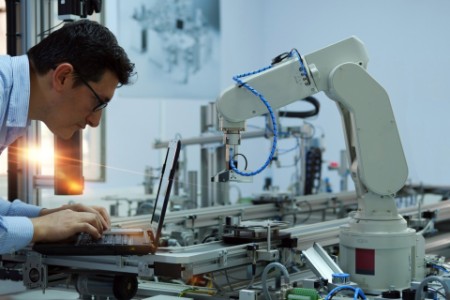This article was authored by Paul Pierotti, Partner in EY Ireland’s Data Analytics practice who specialises in applying analytics to advanced manufacturing.
Ireland has done a wonderful job over the past twenty years in building a footprint as the world’s best at high-value manufacturing. This is especially the case for Life Sciences, with nineteen of the top twenty companies manufacturing in Ireland and deep specialisms in biopharma and medical devices.
Manufacturing plants here are all very good at what they do, but that creates a different kind of challenge. There aren’t many largescale improvements left and we are now in the world of marginal gains, where there are thousands of little changes delivering incremental benefits and extending the reach beyond just the plant.
Delivering continuous value
To protect our global status and critically, our high value manufacturing jobs, we must continue to aspire to increase their value. Essentially, that involves finding new ways of delivering continuous value through lots of little iterative changes both within the plant and across the wider supply chain. My take on how we deliver those incremental benefits, is by continuing to embed analytics and Artificial Intelligence (AI) into these processes.
Industry 4.0 is a term used to describe the current digital shift happening in supply chain and manufacturing. I am a data geek, so not surprisingly I see analytics and AI at the heart of this change. Specifically, there are three key drivers for this increased opportunity.
Firstly, there is the explosion of data. It is estimated that 90% of the world’s data has been created in the last two years. Much of this is machine data being created by smart devices in near real time. There is also a wealth of data sitting underused and isolated within your Manufacturing Execution System (MES), Laboratory Information Management System (LIMS) and Enterprise Resource Planning (ERP) System.
Secondly, Cloud Computing and Edge Analytics have contributed to recent further advancements in computer processing power. This means we can now grab this data and create valuable insights in near real time. Thirdly, digital technology has made it easier to integrate these insights into supply chain and manufacturing processes. We are now able to use these outputs to automate end-to-end processes and also use customised apps to better present insights to decision makers for action.
That is, today we have the data and technology to build from strong process improvement work to deliver further iterative value through digital. Examples of some relevant apps delivering this value are described below. The apps extend beyond just manufacturing to look across the end-to-end supply chain. This is especially important with the shift towards Cell and Gene therapy, which further integrates these related activities.
Demand Forecasting and Capacity Planning - Use machine learning to better predict future demand by time, skew and region. Translate into ongoing capacity requirements across the supply chain to enable better planning.
Smart Factory Yield Optimisation - Better drive continuous improvement through a series of targeted apps across the factory. Includes predicting and addressing potential yield deteriorations and batch deviations.
Digital Control Tower - Provide end-to-end visibility across supply chain and manufacturing, including for CMOs. Incorporate AI-enabled scheduling and Inventory Optimisation.
Quality Assurance and Regulatory Management - Provide second and third level validation to QA processes through the use of AI, e.g. Computer Vision for default checks, natural language processing for regulatory validations.
AI-Enabled Scheduling - Improve and automate scheduling decisions through making real-time performance more visible using AI. Includes incorporating and reallocating potential batch deviations.
Augmented Reality Enabled Engineer - Leverage AR to support front line engineering activities with leading practice and AI insights, e.g. for line clearance, over the shoulder support, Digital SOPs, etc.
Inventory Optimisation - Quantify the inventory contingency across the supply chain and the relationship with stock outs. Set and manage appropriate stock levels accordingly.
Digital Twin - Build a virtual version of the end-to-end supply chain or specific components (such as specific plant changes) to redesign and validate changes before implementation.


